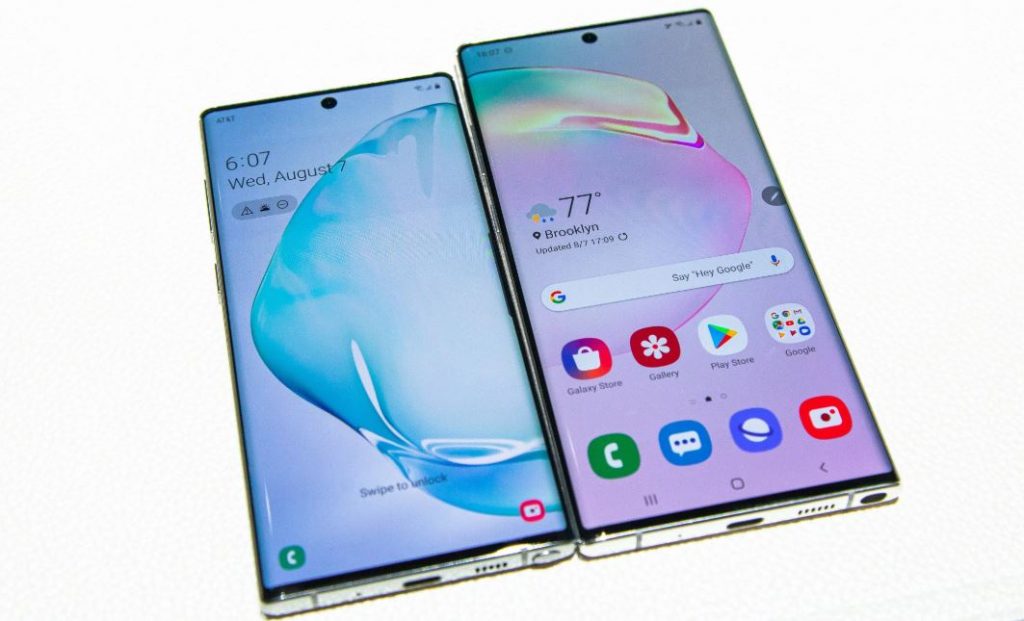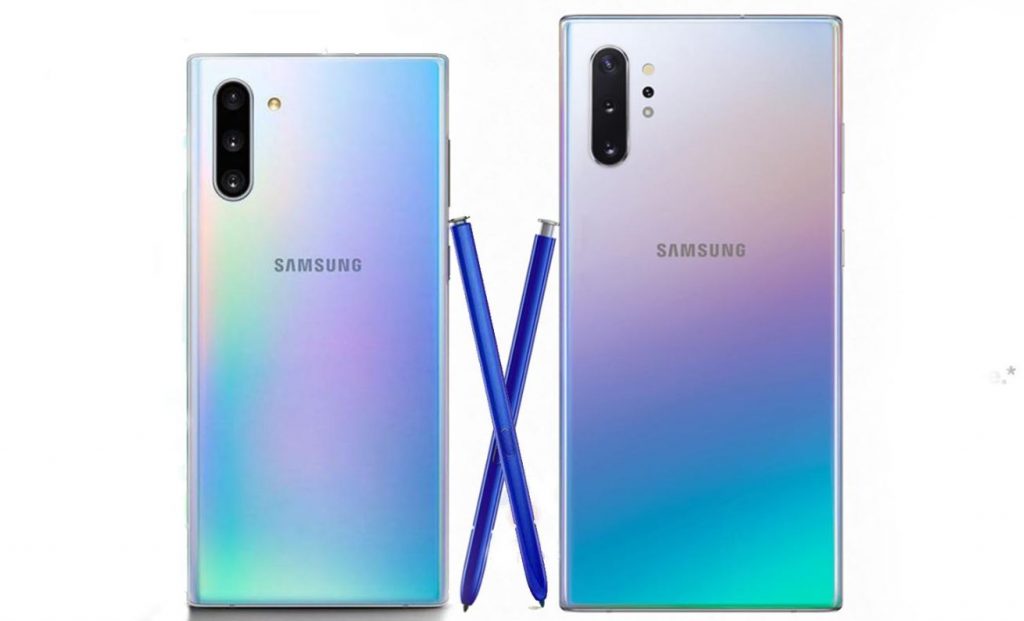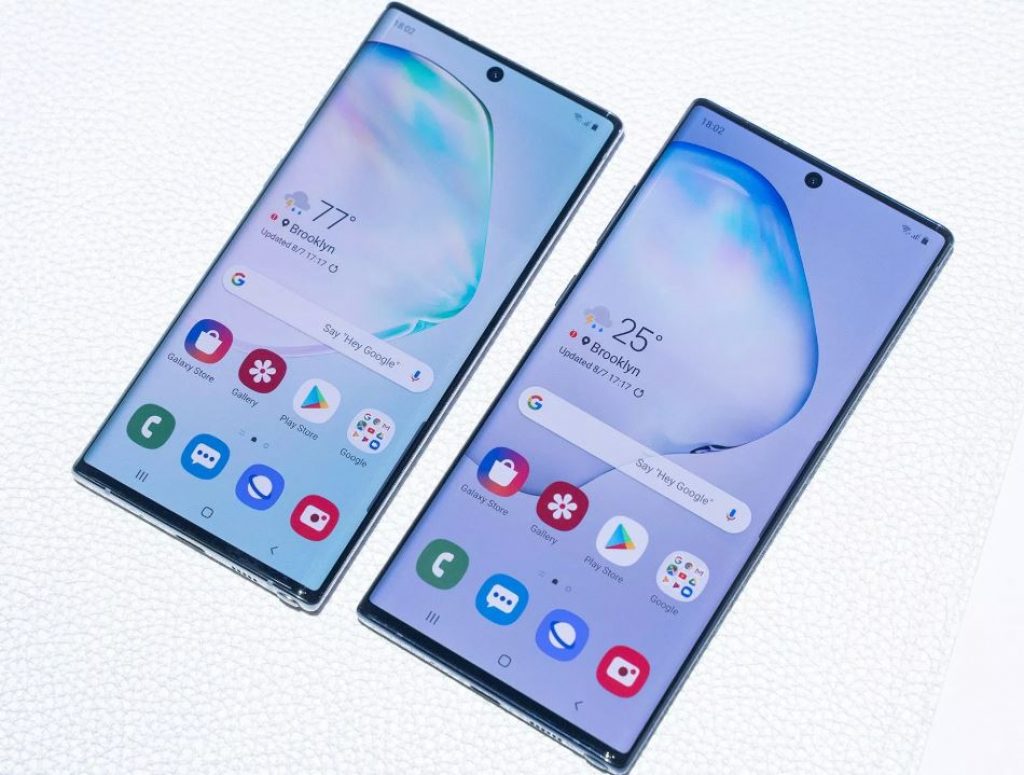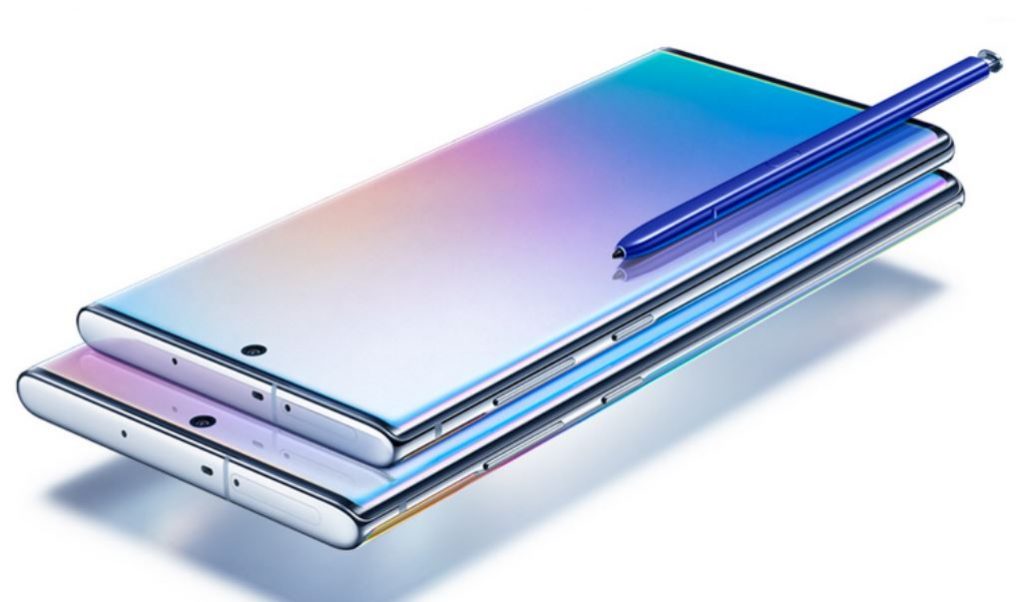
This year we will not get one, but two versions of Samsung’s flagship phablet, the Galaxy Note 10. There is the standard model, at 6.3 inches, and the Galaxy Note 10 Plus, with a giant 6.8-inch display. However, the differences between the two handsets go much further than the size. Even more complicated: the Note 10 costs $949, while the Note 10 Plus starts at $1,099. If you are trying to decide which new phablet you want to preorder, you can compare them as follows.
Samsung Galaxy Note 10 vs Note 10 Plus – Design and Size
Note 10 and Note 10 Plus spit images of each other, aesthetically speaking. Both are packed in Gorilla Glass 6 with metal frames; equipped with center-mounted Infinity-O perforator cameras at the front, placed in virtually borderless screens; and are missing for the first time in the history of headphones.
The differences have less to do with the design and the size. The 6.3-inch screen of the Note 10 is large enough, although the 6.8-inch panel on the Note 10 Plus makes it a shame. For that reason, the Note 10 Plus is also heavier and it weighs about one ounce more than the normal version. However, the S Pen stylus is identical regardless of which model you purchase.

The newest Notes from Samsung are plates in every sense of the word, with sharp edges and yet rounded edges. They are each offered in different colors – black, white, blue and the new Aura Glow. That color option has a mirrored shine but reflects rainbow spectrums of light. Markets outside the United States will also see some additional color combinations, such as red.
Samsung Galaxy Note 10 vs Note 10 Plus – Display
In addition to their contrasting dimensions, the displays on both Note 10 models are also subtly different. Although they all use the dynamic AMOLED technology from Samsung, the Note 10 Plus panel has a higher resolution to bridge those extra half-inch real estate. The 6.8-inch Note 10 Plus has a Quad-HD + panel – or 1440p – while the screen of the 6.3-inch Note 10 of 1080p is Full-HD +. If we break it down in terms of density, the screen in the Note 10 Plus contains 498 pixels for every square inch, while the screen of the Note 10 measures up to 401.
That is a difference of almost 100 pixels per inch, which translates into sharper text and graphics on the Note 10 Plus, where individual pixels are harder to distinguish with the naked eye. In addition, both devices support HDR10 + color, so you should not expect a richer image in Note 10 Plus. In all other aspects besides resolution – clarity, accuracy and viewing angles – we expect that the Note 10 duo is exactly the same, if not extremely comparable.
Samsung Galaxy Note 10 vs Note 10 Plus – Camera Setup
The Note 10 gets a page from the Galaxy S10 series from Samsung and adds a camera lens to the back, which equals a total of three in the basic model. These are two 12-megapixel wide and telephoto shooters, with a 16-MP ultra-wide lens that adds a field of view of 123 degrees, which should be ideal for landscapes. On the front of the phone, you will find a 10-MP camera for selfies. The same camera format is also present in Note 10 Plus, although Samsung adds the fourth lens in that model. It is a small time-of-flight sensor that lives under the flash and is exclusively designed for measuring depth and distance in 3D space.

This fourth lens, which Samsung has called the DepthVision camera, helps the Note 10 Plus to better understand the physical space in certain shooting modes – for example, when capturing a shallow depth of field Live Focus portrait, for example. Samsung introduced a similar sensor in the Galaxy S10 5G earlier this year, and we discovered that this helped the device take slightly sharper bokeh shots, with a more precise definition between the foreground and the background of a certain scene.
If the camera specifications sound largely familiar, it is because Samsung has not surpassed the still photography in the Note 10 series beyond what the Galaxy S10 line had to offer this past spring. Instead, most of the effort has gone into adding new video modes, such as Live Focus for video and AR Doodle, which you can use to draw on people in the video feed. Although most people are likely to use Live Focus video to blur backgrounds, both phones also offer a spot color feature so that you can emphasize the subject and display their environment in black and white.
Samsung Galaxy Note 10 vs Note 10 Plus – Performance
Unlike rumors prior to the release that the Samsung phablets would use a faster Qualcomm processor, the Snapdragon 855 Plus, both devices have normal 855 chips in North America. The Snapdragon 855 is, as you may recall, the same silicon behind the Galaxy S10, as well as many other premium Android phones released for 2021. In the rest of the world, Samsung’s Exynos 9825 feeds every phone. In terms of performance, the only way Note 10 and Note 10 Plus differ relates to RAM.

The regular Note carries 8GB, while the Note 10 Plus benefits from 12GB. The extra memory should give the Note 10 Plus a performance improvement over its brother or sister, although we have to perform our benchmarks to confirm that. Regarding storage, both devices come with 256 GB standard, although only the Note 10 Plus has a MicroSD slot for expandability, as well as a 512 GB configuration.
Samsung Galaxy Note 10 vs Note 10 Plus – Battery and Charging
With last year’s Galaxy Note 9, Samsung introduced the largest battery ever in a smartphone – a 4000 mAh power pack that lasted 11 hours and 26 minutes in our tests. The Note 10 undermines that capacity at 3,500 mAh, while the Note 10 Plus improves it with a new 4,300 mAh unit. Both devices have 25-watt fast charging out of the box, which is a huge improvement on previous Samsung handsets. There is also a 45 W option that is designed to push juice to the phone within 30 minutes a day, although you need to purchase that faster charger separately.
Both phones support 15 W wireless charging, as well as Wireless PowerShare, which you can use as improvised induction pads to charge other devices.
Samsung Galaxy Note 10 vs Note 10 Plus – Extras
Fortunately, from a software point of view, the pair of Note 10 is identical. Both sport Samsungs OneUI front-end on top of Android 9 Pie and both come with the S Pen – the distinctive stylus of the Note, which this time can also be used for some smart air gestures. Hold the S Pen in front of the screen of both phones while holding down the button, and you can drag in a certain direction to activate a shortcut.

In the camera app, for example, swipe up in the air with the S Pen switches from the rear lenses to the front lens. Swipe left or right to switch between different camera modes, and of course, you can always press the S Pen button to use the stylus as an external shutter. Productivity-oriented users will be happy to know that with the Note 10 series you can now both convert handwriting to text and export the result in one go to a third-party word processing app, such as Microsoft Office 365.
DeX mode also returns with the latest Note generation, so you can connect your phablet to a monitor to transform it into an improvised desktop computer. Just like with Note 9, you are not forced to use one of the specially designed docks from Samsung to switch on DeX; a simple USB Type-C to Type-A cable is sufficient. You can even connect the device to a Windows or Mac PC to run DeX as a second operating system, in window mode, making it easier to transfer files.
